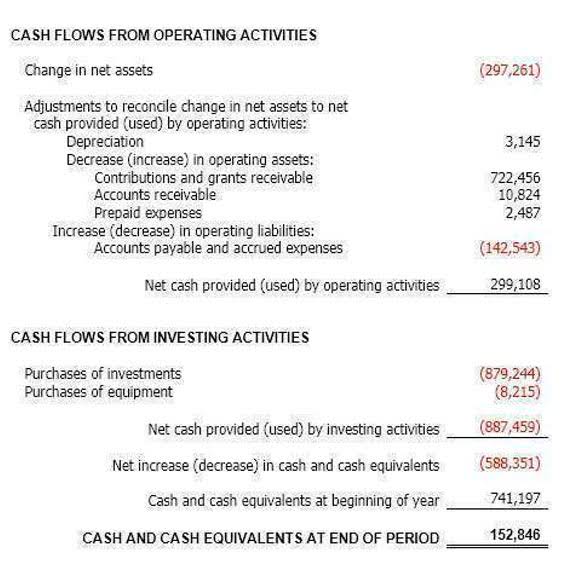
Note that this process is exclusively for reconciliations performed by hand. If you use accounting https://www.bookstime.com/ software, then your reconciliation is done largely for you. However, as a business owner, it’s important to understand the reconciliation process.

Reconcile the bank account or accounts:

For the most part, how often you reconcile bank statements will depend on your volume of transactions. Once you’ve figured out the reasons why your bank statement and your accounting records don’t match up, you need to record them. We’ll go over each step of the bank reconciliation process in more detail, but first—are your books up to date? If you’ve fallen behind on your bookkeeping, use our catch up bookkeeping guide to get back on track (or hire us to do your catch up bookkeeping for you). Hopefully you never lose any sleep worrying about fraud—but reconciling bank statements is one way you can make sure it isn’t happening.
- After receiving a bank statement dated 31 December 20×1 for a checking account at First National Bank, the accountant for Sample Company began the reconciliation process.
- The purpose of preparing a bank reconciliation statement is to reconcile the difference between the balance as per the cash book and the balance as per the passbook.
- For example, say ABC Holding Co. recorded an ending balance of $500,000 on its records.
- To do this, businesses need to take into account bank charges, NSF checks, and errors in accounting.
Step 5: Record All Adjustments As Per Cash Book Into Your Company’s General Ledger Cash Account
- We strongly recommend performing a bank reconciliation at least on a monthly basis to ensure the accuracy of your company’s cash records.
- Connect with BDO Digital to learn how we can support your journey to greater efficiency and confidence in your financial data.
- Bank reconciliation is a critical process that helps ensure the accuracy of financial records by matching…
- An online template can help guide you, but a simple spreadsheet is just as effective.
- As a key part of the balance sheet reconciliation process, month-end bank reconciliations are performed at the end of each month to ensure that all bank transactions for the period are accounted for.
- Whatever method you prefer, it’s important to keep solid records of every transaction to reconcile your bank account properly.
Once you have identified all the differences between the two statements, identify the source of the discrepancy. Common sources include deposits in transit that have not yet been deposited in your bank account, as well as bank fees that have been withdrawn by your bank but may have been missed in your company records. Once you’ve identified all the items that align between the two records, it’s time to account for any discrepancies. These may include deposits in transit, outstanding checks, bank fees, or miscalculations by the bank or the internal accounting team. Regularly reconciling your bank statements helps businesses detect potential issues with their financial recording system, making it easier to rectify those problems quickly. This can range from one-off errors such as calculation mistakes or double payments to major concerns like theft and fraud.
Do you already work with a financial advisor?

It may be better to terminate the account and roll any residual funds into a more active account. By doing so, bank reconciliation it may be easier to invest the residual funds, as well as to monitor the status of the investment. The checks Fender wrote to vendors won’t actually be withdrawn from Fender’s bank account until the vendors actually receive and cash them.

Reconciling your bank statement used to involve using a checkbook ledger or a pen and paper, but modern technology—apps and accounting software—has provided easier and faster ways to get the job done. Regardless of how you do it, reconciling your bank account can be a priceless tool in your personal finance arsenal. To reconcile means to “make one view or belief compatible with another.” In accounting, that means making your account balances equal to one another. More specifically, a bank reconciliation means balancing your bank statements with your bookkeeping. For example, say ABC Holding Co. recorded an ending balance of $500,000 on its records. After careful investigation, ABC Holding found that a vendor’s check for $20,000 hadn’t been presented to the bank.
- This process is crucial for performing accurate financial reporting and managing cash flow effectively.
- Our writing and editorial staff are a team of experts holding advanced financial designations and have written for most major financial media publications.
- Bank reconciliation helps to identify errors that can affect estimated tax payments and financial reporting.
- In the case of personal bank accounts, like checking accounts, this is the process of comparing your monthly bank statement against your personal records to make sure they match.
- If you want to prepare a bank reconciliation statement using either of these approaches, you can use the balance as per the cash book or balance as per the passbook as your starting point.
Once you’ve completed the balance as per the bank, you’ll then need to work out the balance as per the cash book. These checks are the ones that have been issued by your business, but the recipient has not presented them to the bank for the collection of payment. At times, you might give standing instructions to your bank to make payments regularly on specific days to third parties, such as insurance premiums, telephone bills, rent, sales taxes, etc. Many financial institutions rely on a leading banking ERP solution to manage transactional data and core operations. While this platform is effective for operational tasks, today’s financial landscape demands more. Since the notification had not been received, it was necessary to put this item on the reconciliation.
Bank Reconciliation Process FAQs
Bank statements are commonly routinely produced by the financial institution and used by account holders to perform their bank reconciliations. To assist in reconciliations, many financial institutions now also offer direct downloads of financial transaction information into the account holders accounting software, unearned revenue typically using the .csv file format. An NSF (not sufficient funds) check is a check that has not been honored by the bank due to insufficient funds in the entity’s bank accounts. This means that the check amount has not been deposited in your bank account and hence needs to be deducted from your cash account records. Match the deposits in the business records with those in the bank statement. There are bank-only transactions that your company’s accounting records most likely don’t account for.
There are times when the bank may charge a fee for maintaining your account, which will typically be deducted automatically from your account. Therefore, when preparing a bank reconciliation statement you must account for any fees deducted from your account. To reconcile your bank statement with your cash book, you’ll need to ensure that the cash book is complete and make sure that the current month’s bank statement has also been obtained. Such errors are committed while recording the transactions in the cash book, so the balance as per the cash book will differ from the passbook. Now, such a figure will be shown as a credit balance in your cash book, however, in the bank statement, that balance will be showcased as a debit balance and is known as the debit balance as per the passbook.

